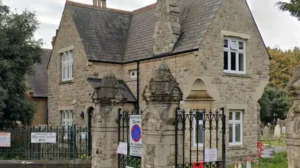Key Points
- An interactive map highlights the London boroughs experiencing the largest population increases, with Tower Hamlets, Islington, and Camden leading the surge.
- London’s population is rapidly approaching the 10 million mark, driven by significant growth in select inner-city areas.
- Tower Hamlets tops the list, followed closely by Islington and Camden, according to the latest data visualisation.
- The population boom presents both opportunities and challenges for local authorities, including housing, infrastructure, and public services.
- Demographic shifts are influenced by factors such as regeneration projects, international migration, and economic opportunities.
- Local leaders and residents express a mix of optimism and concern about the implications of rapid population growth.
- The interactive map offers detailed, borough-by-borough insights, enabling policymakers and the public to track demographic trends in real time.
London is on the cusp of a major demographic milestone, with a newly released interactive map revealing that Tower Hamlets, Islington, and Camden are the boroughs facing the largest increases in population as the number of Londoners edges closer to 10 million. The data, visualised in a user-friendly format, offers a granular look at how the capital’s population landscape is shifting, raising important questions about the future of housing, infrastructure, and community services.
What Does the Interactive Map Show About London’s Population Growth?
The interactive map, which aggregates the latest population data from official sources, provides a borough-by-borough breakdown of where London’s growth is most pronounced. As reported by multiple media outlets, including Tower Hamlet News, the map identifies Tower Hamlets, Islington, and Camden as the top three boroughs experiencing the fastest population rises. This trend is part of a broader pattern that is pushing London’s total population towards the 10 million threshold.
According to the data, Tower Hamlets leads the surge, driven by a combination of new housing developments, regeneration schemes, and its appeal to both domestic and international migrants. Islington and Camden follow closely, each benefiting from their central locations, vibrant economies, and cultural attractions.
Why Are Tower Hamlets, Islington, and Camden Experiencing the Largest Population Increases?
Several factors contribute to the rapid growth in these boroughs:
- Regeneration and Housing Development: Tower Hamlets, in particular, has undergone extensive regeneration, with new residential complexes and commercial spaces attracting a diverse population.
- Proximity to Central London: Islington and Camden’s central locations make them attractive to young professionals and families seeking easy access to employment and amenities.
- Cultural and Economic Opportunities: All three boroughs offer a rich mix of cultural venues, educational institutions, and job opportunities, drawing people from across the UK and abroad.
As reported by Tower Hamlet News, local officials attribute much of the growth to strategic investments in infrastructure and housing, which have transformed previously underdeveloped areas into thriving urban centres.
How Are Local Authorities Responding to the Population Boom?
The surge in population presents both opportunities and challenges for local councils. Tower Hamlets Council, speaking to Tower Hamlet News, acknowledged the need to balance growth with sustainable development:
“We welcome the vibrancy and diversity that new residents bring to our borough,” said a spokesperson for Tower Hamlets Council, as quoted by Tower Hamlet News. “However, rapid population growth also places significant pressure on housing, schools, healthcare, and transport. We are committed to working with partners to ensure that infrastructure keeps pace with demand.”
Similarly, Islington and Camden councils have emphasised the importance of forward planning. As reported by Tower Hamlet News, Islington Council leader Cllr Kaya Comer-Schwartz stated:
“Islington is proud to be a growing, inclusive community. Our focus is on delivering affordable housing and high-quality public services to meet the needs of all residents.”
What Are the Implications for Housing, Infrastructure, and Public Services?
The influx of new residents is reshaping the urban landscape in profound ways. Housing demand has soared, leading to rising property prices and increased competition for rental accommodation. Local authorities are under pressure to deliver affordable housing and prevent displacement of long-standing communities.
Infrastructure—including transport, schools, and healthcare facilities—must also expand to accommodate the growing population. As noted by Tower Hamlet News, Tower Hamlets Council has launched several initiatives to upgrade local amenities and improve public transport links.
Public services face similar challenges. Camden Council, in a statement to Tower Hamlet News, highlighted the need for additional funding to support schools and health clinics, particularly in areas experiencing the fastest growth.
How Are Residents Reacting to the Changing Demographics?
Reactions among residents are mixed. Some welcome the increased diversity and economic dynamism, while others express concerns about overcrowding and rising living costs.
A Tower Hamlets resident, interviewed by Tower Hamlet News, remarked:
“It’s exciting to see the area becoming more vibrant, but there’s also a worry that long-term residents might be priced out. We need to make sure growth benefits everyone.”
Community groups in Islington and Camden have called for greater consultation on development projects, urging councils to prioritise affordable housing and protect green spaces.
What Role Does International Migration Play in London’s Population Growth?
International migration remains a key driver of population change in London. All three boroughs—Tower Hamlets, Islington, and Camden—have long histories as gateways for newcomers to the capital. Recent years have seen a surge in arrivals from Europe, Asia, and Africa, contributing to the boroughs’ rich multicultural character.
Tower Hamlet News reports that Tower Hamlets now boasts one of the most diverse populations in the UK, with over 90 languages spoken in local schools. This diversity is celebrated as a strength, but it also requires targeted support for integration and community cohesion.
How Can the Interactive Map Be Used by Policymakers and the Public?
The interactive map is designed to be a practical tool for both policymakers and the general public. By offering real-time data on population trends, it enables councils to identify areas of greatest need and plan accordingly. Residents can use the map to understand how their neighbourhoods are changing and to engage in local decision-making.
As stated by a spokesperson for the map’s developers, quoted in Tower Hamlet News:
“Our goal is to make demographic data accessible and actionable. By visualising where growth is happening, we hope to support informed debate about London’s future.”
What Are the Next Steps for London as Its Population Approaches 10 Million?
With London on track to reach 10 million residents in the coming years, the city faces a critical juncture. Local authorities, community groups, and residents must work together to ensure that growth is inclusive, sustainable, and beneficial for all.
Tower Hamlet News concludes that continued investment in infrastructure, affordable housing, and public services will be essential to maintaining London’s status as a global city.








